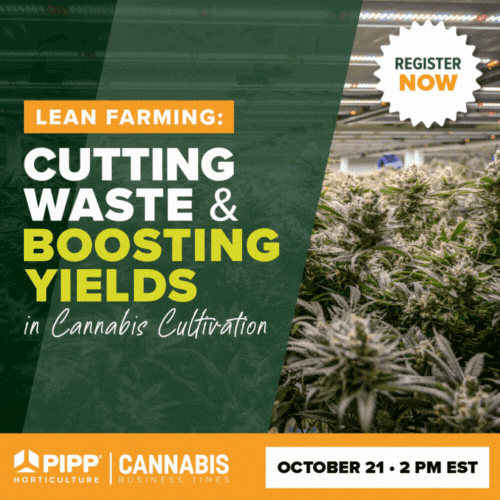Hi, I am Dr. Alex Guenther of Pacific Environmental Analytics (PEA). Last month, we took a closer look at molecular filtration and identified some often overlooked considerations that can have a real impact on the efficacy and efficiency of indoor odor control systems. This month, we are going to explore why the different styles of cannabis cultivation as well as the stages/life cycle of the plant matters when it comes to deciding where and when to deploy odor mitigation and what types of technology to utilize.
As a preliminary matter, it is helpful to understand the different stages of cannabis plant growth. What follows is a very basic summary and is most applicable to greenhouse cultivation as opposed to pure outdoor. Most commercial cultivators start with a “clone” – a cutting taken from a vegetative mother plant – and the plants will stay in this stage for three (3) to four (4) weeks. The next stage in the cannabis plant life cycle is the vegetative (juvenile) stage which typically lasts anywhere from four (4) to six (6) more weeks depending on the strain and other factors. This is followed by the flowering (mature) stage which lasts between seven (7) and ten (10) weeks before harvest.
In many odor control plans, we see that the licensing authorities have apparently required odor mitigation for nurseries. However, we respectfully suggest that is unnecessary as during the nursery and early juvenile stage, cannabis plants emit relatively few terpenes or other biogenic volatile organic compounds (BVOCs). Consequently, there is very little odor associated with this stage and odor control measures are likely unnecessary and a poor allocation of resources for cultivators.
While the maturing plant does emit more BVOCs, the vegetative (juvenile) cannabis plant emissions do not rise to a level that would contribute to significant odor events necessitating odor mitigation applications. In fact, we have observed that the BVOC emissions of vegetative cannabis plants are similar to the BVOC emissions of other vegetation and common US trees such as Acacias, Eucalypts, Pines, Walnuts, and Sweetgum. The Biogenic Emission Inventory System (BEIS) model, developed and used by the US EPA and other agencies to estimate biogenic emissions for regional air quality modeling, assigns emission factors to the dominant US vegetation species based on reported emission rates measured using enclosure methods and has assigned an emission factor of 3.2 g m-2 h-1 for those particular trees. This value is similar to the median emission rate of 3.8 g m-2 h-1 observed for vegetative (juvenile) cannabis plants of five (5) common strains: Banjo, Forbidden Fruit, Gorilla Glue, Presidential OG and Wedding Cake. The fact that juvenile plants emit terpenoids at rates similar to what can be found in many natural forested ecosystems illustrates why odor control should not be a concern for cultivators during this stage.
Once cannabis plants have matured and reached the flowering stage, odor quickly becomes a concern. In contrast to the relatively low median emission rate noted above for juvenile plants, the median emission rate observed for flowering plants of the same five (5) strains is 40 g m-2 h-1. This emission rate is about ten (10) times higher and to put it simply, more BVOC emissions means more odor. While cannabis cultivators and processors handling the harvested plants would be wise to focus on implementing an effective odor control strategy during this stage, there are different technologies to utilize based on the style of grow or structure of the processing facility. For example, cultivators or processors utilizing a warehouse-style (fully enclosed) facility should focus on finding and installing an appropriately-sized molecular filtration system (as discussed last month). For cultivators utilizing a greenhouse or greenhouse-style structure, a hybrid approach utilizing an interior molecular filtration system coupled with a targeted vapor system is usually appropriate and effective. Finally, for cultivators with a completely outdoor grow, there are a number of natural factors that can aid with the destruction of BVOCs and the associated odors – for example, wind patterns, tree lines and naturally occurring UV can all act as “natural” odor mitigation tools. However, for those outdoor operations that have close odor receptors or who don’t have helpful meteorological or geographical conditions, a properly-engineered vapor system may be necessary.
As you can see, there are many factors and considerations when deciding where, when and how to deploy odor control systems and methods. Commercial cannabis cultivators and processors would be well advised to seek professional guidance during the planning phase so that odor control dollars can be directed toward solutions that make the most sense for their particular operation.

















